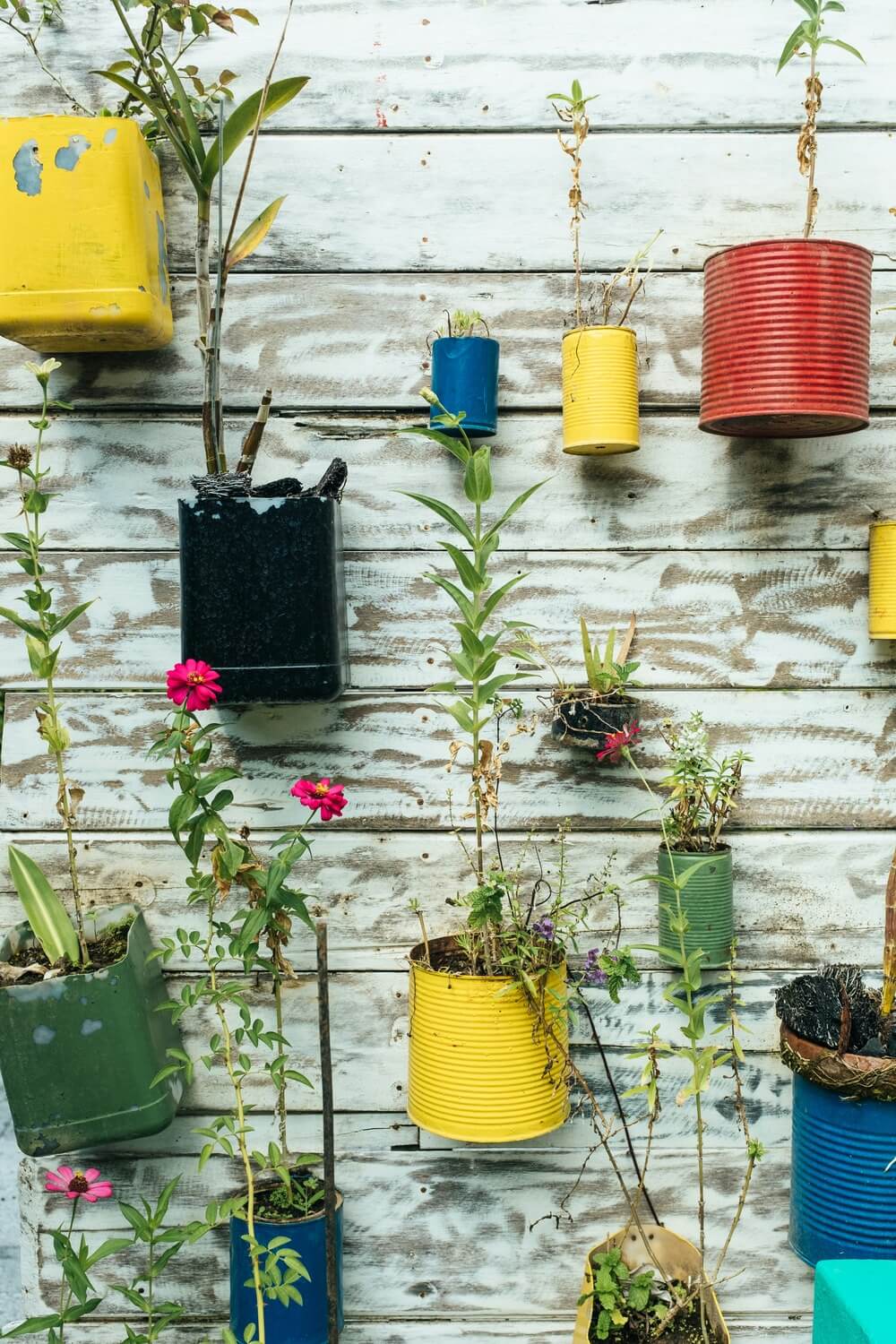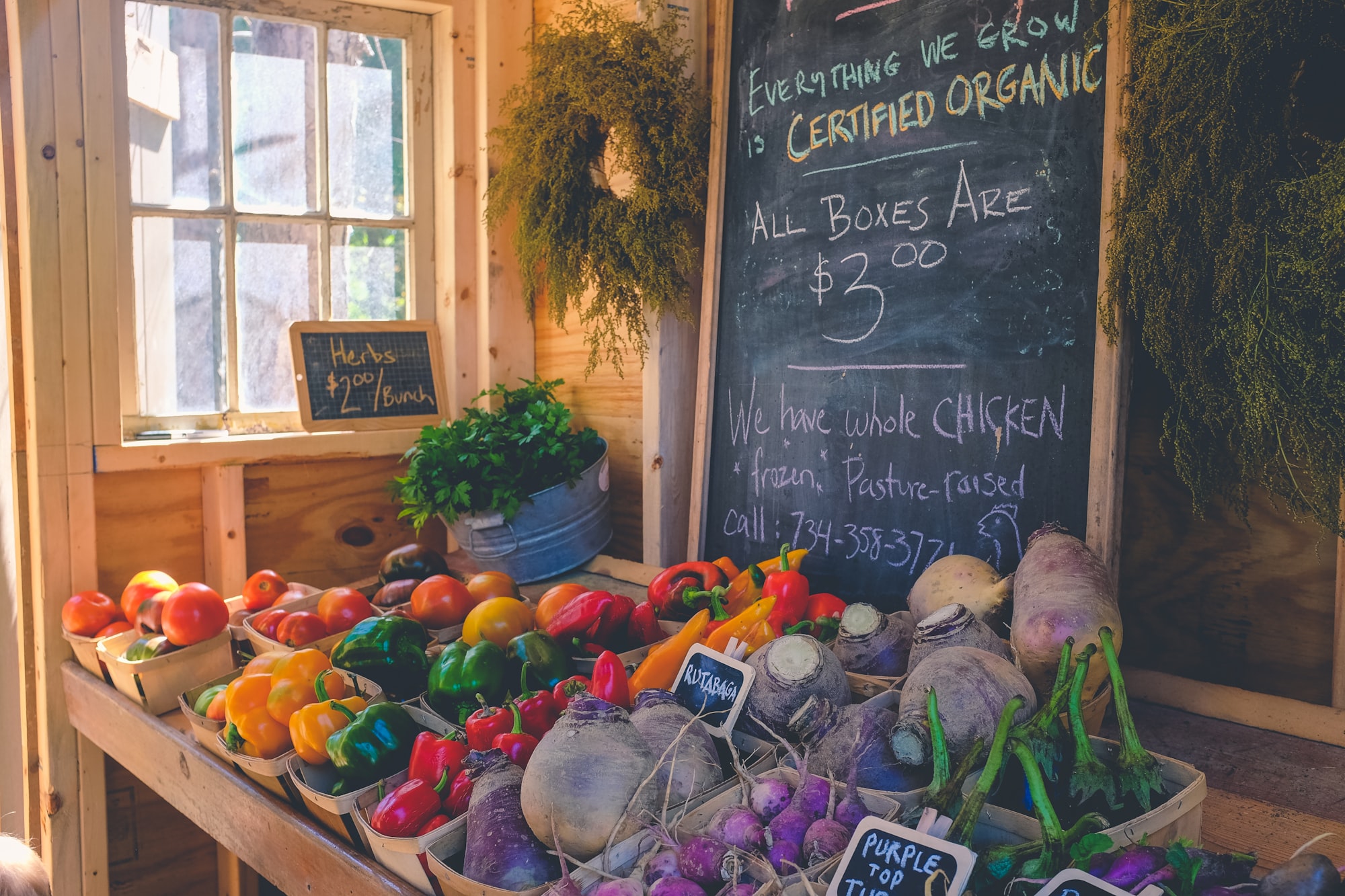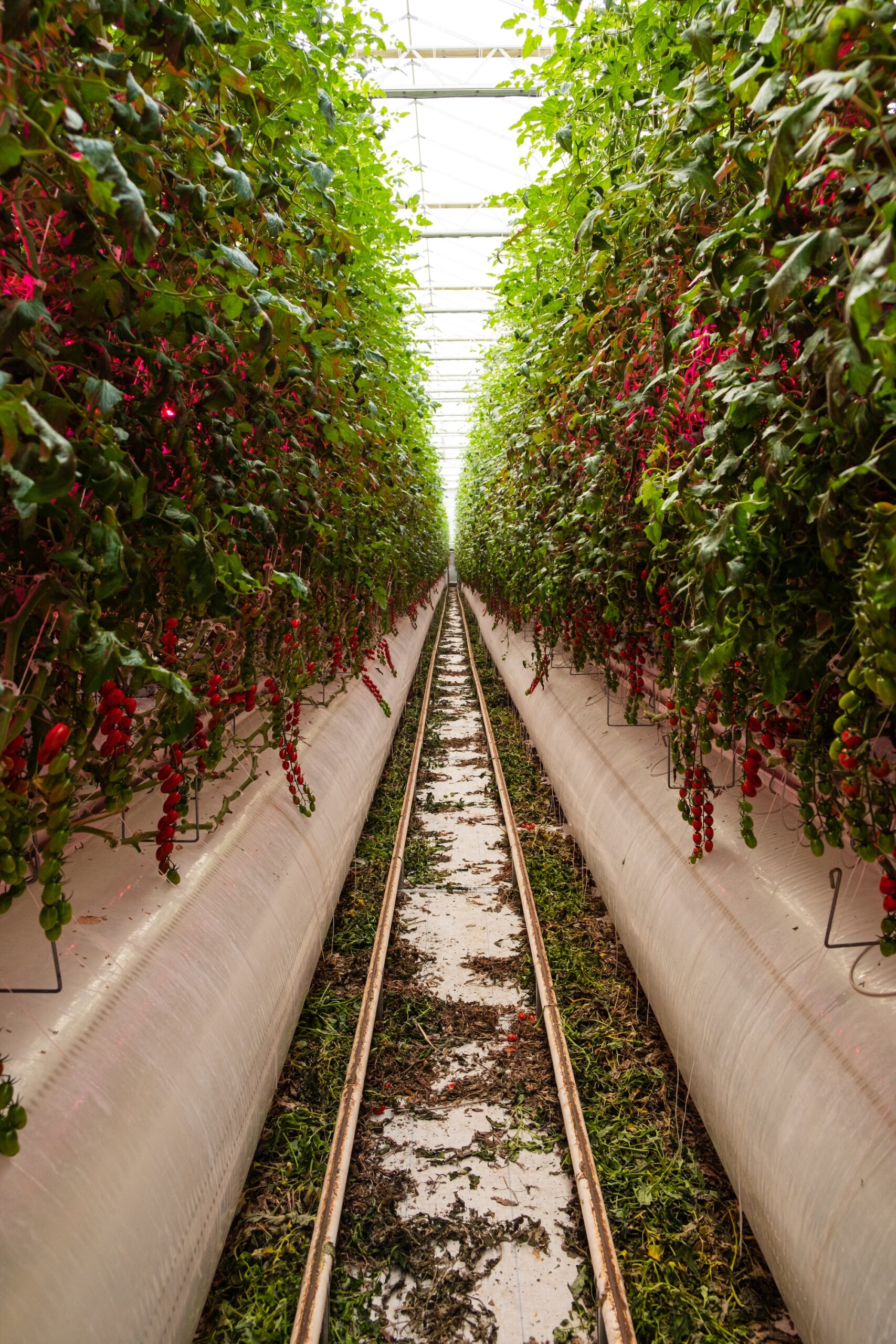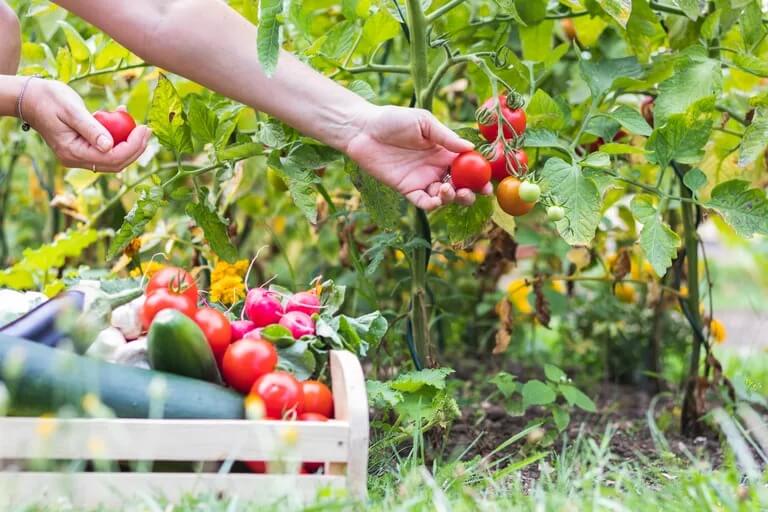
At the beginning of the 20th century, more than half of Americans lived in rural areas. How we lived and what we ate were deeply intertwined. But today, fewer than 2% of people live on farms or ranches.
Despite this trend toward Big Agriculture, Victory Gardeners in the 1940s and plant lovers in the ‘60s and ‘70s chose to grow their own food. Today, Millennials and a growing number of Gen Zers recognize that kitchen gardening helps curtail their carbon emissions, connects them with their bioregion, and saves them hard-earned cash.
We designed this guide to help you grow your own food, no matter where you live.
The Popularity of Home Food Gardening
By 2014, around one in three American households grew their own food—the highest participation in a decade. Public figures, including Michelle Obama, popularized edible gardening and brought the connection between food, health, and climate into the national conversation.
By 2020, the country was primed for an explosion of what’s commonly known as kitchen gardening. Supply chain issues, the challenges of shopping for food in a grocery store, and the need to find safe, outdoor activities drove many younger Americans to grow their own food.
A survey conducted by retailer Bonnie Plants found that nearly two in five people under the age of 35 reported growing their own veggies and herbs—many of whom were gardening for the first time. Suddenly, the younger generation had supplanted Baby Boomers as the largest demographic of home food gardeners.
Challenges of Home Food Gardening
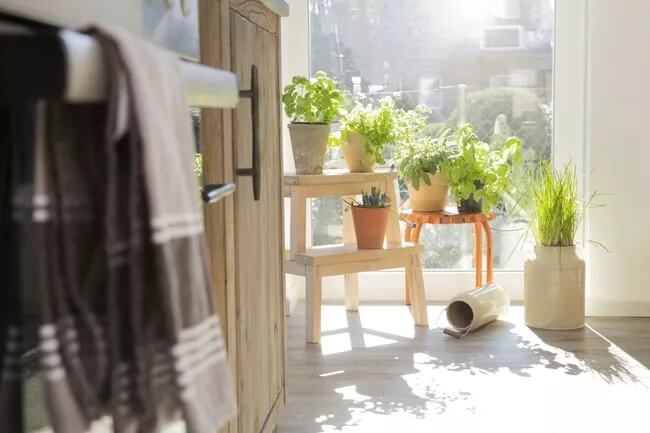
These new gardeners face unique challenges compared to older generations. Because the majority of Millennials live in urban areas and rent instead of own their homes, it can be difficult for them to find space or proper sun exposure to grow edible garden plants. These gardeners must cultivate food in their kitchens or, if they’re lucky, in community gardens.
The generation gap also exposes itself as a wealth gap, not just in property ownership but also in wealth accumulation. Millennials make significantly less money than any generation before them, but they bear the cost of inflation, including food.
Corn, soy, wheat, and rice subsidies make processed foods far less expensive than fresh fruits and vegetables. For people on a budget, affording the luxury of buying plants or seeds and waiting for them to produce edible food may not be feasible.
The same holds for composting, which has size limits if confined to an indoor space. Without state or local ordinances that require municipal waste management to include composting, a genuinely circular food system remains a dream.
Still, with a bit of research and some creativity, almost anyone can create an affordable edible garden, no matter how small.
The Benefits of Growing Your Own Food

Growing your own food provides benefits to both personal and planetary well-being. It can help you create a circular waste stream, educate you on your local climate, and even save you money.
Reduces Food Waste
As much as 40% of food in the United States is wasted—a devastating and unsustainable reality given that we must feed our ever-growing population. Food grown at home is less likely to go to waste because it can easily be picked fresh and consumed immediately. Plus, it tastes great!
Reduces Transportation Emissions
Kitchen gardening requires fewer transportation emissions from farm-to-store and store-to-table. A 2008 study found that about 15% of food-related emissions occur after food leaves the farm (not accounting for consumer transportation to home). Reduce your mileage—or the mileage driven by a grocery delivery service—and save time by growing foods you consume regularly.
Reduces Plastic Waste
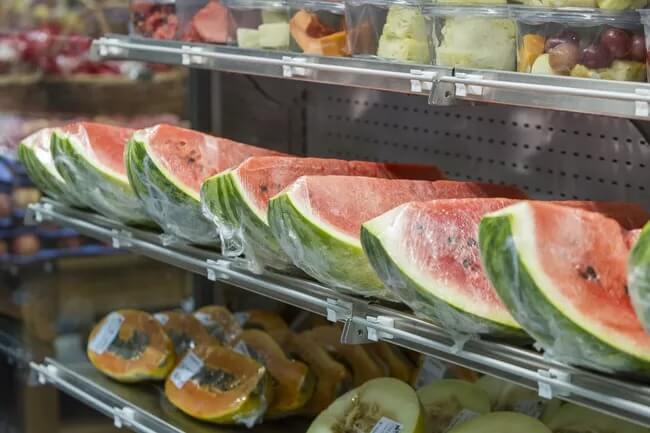
Fruits, vegetables, and herbs are notorious for being packaged in plastic. Clamshell boxes, pre-portioned mesh bags, and plastic produce bags (for customers who forget their reusable ones) are nonrecyclable. Many veggies and herbs can be grown in nearly any home, keeping that plastic out of landfills and eventually our drinking water.
Turns Food Scraps into New Food
There’s a type of composting for you no matter where you live. After using your homegrown veggies and herbs in a broth, repurpose the scraps into food for your food. Welcome to your circular kitchen.
Provides Homes for Pollinators

The only thing that makes an edible garden better is an edible garden that attracts pollinators like bees, butterflies, birds, and even bats.
Helps Sequester Carbon in Soil
Let your kitchen garden double as a carbon garden. By taking pollinators into account, edible gardens can mimic natural relationships between plants and animals, creating carbon sinks that remove greenhouse gasses from the atmosphere.
Improves Health
A study out of Texas A&M found that gardening can reduce stress and anxiety. Growing your own food also encourages you to eat more fruits and vegetables, reduces your pesticide intake, and engages you in a relationship with your food.
Saves You Money
There are many foods you can grow for next to no investment. You can grow celery from scraps and green onions in a jar of water. Culinary herbs like mint and basil can grow in containers by a kitchen window and are often comparably priced to their precut counterparts.
Getting Started
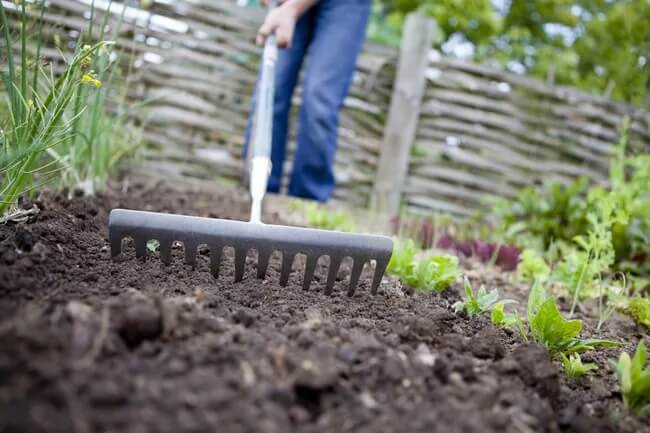
Getting your kitchen garden started is easy. Once you know where you’ll be growing, you can plan out your fruits and veggies and celebrate your climate victory.
Select Your Garden Location
You don’t need a plot of land to grow your own food. You can grow inside or outside, so long as you have access to sunlight and water. Even a well-lit window can grow herbs and other vegetables in small containers.
Understand Your Hardiness Zone
Edible gardens understandably look different in South Dakota than they do in Florida. USDA’s Plant Hardiness Zone Map guides gardeners to the plants most likely to thrive in their zip code.
By understanding how your microclimate will help or hinder your gardening efforts, you can build a resilient and diverse garden that can provide food for years. Go another step further by including the concept of bioregionalism in designing your kitchen garden.
What Is a Bioregion?
A bioregion is a geographic area defined by its biological and topographical features while considering how the humans who live there interact with the natural world. This concept contrasts with boundaries defined by political, economic, or cultural distinctions.
Map Your Sunlight

Whether you’re planting in your backyard, on your balcony, or in your bedroom, what you need is good sun exposure. Many edible plants, especially fruit trees, require six hours of full sun that can be split up during the day.
Scout the perfect garden location by creating a sun map. Pay attention to how sunlight affects your whole gardening area as some parts may have sun and shade at different times of the day. Sunlight also changes throughout the year, so it’s often valuable to map your sun once per season to get an accurate annual picture.
If you’ve got more shade than sun, don’t despair. Lettuce and other greens love the shade.
Select Your Plants
After all that research, you’re ready to choose which plants will work best for your edible garden. If you’ve got a yard, you have your choice of beans, squashes, root vegetables, fruit trees, berries, herbs, and cruciferous vegetables. Container gardeners often favor herbs, tomatoes, peppers, onions, greens, and dwarf fruit trees.
Consider planting a mix of foods instead of a singular crop. Polyculture gardens have higher yields than monocultures. You may also want to plan for a bit of crop rotation through the growing seasons.
If you’d like expert guidance on what to select, buy your starter plants at a specialty nursery where the employees are knowledgeable about home food gardening.
Consider your container size when choosing your plants. A limited space garden can support peppers, herbs, kale, and greens grown in small containers. Beans, tomatoes, and cucumbers, on the other hand, need containers at least two feet in diameter.
Choose Good Soil

If your yard garden has deep, well-drained, quality soil, you can plant food in it. Otherwise, you may opt for purchased soil in raised beds (just as container gardeners do). You’ll see a difference when using high-end organic soil wherever you grow.
Quality soil comes at a price, but it’s a worthwhile investment for beginning gardeners. Keep in mind that while topsoil for ground gardening stays stable year after year, potting soil decomposes. You’ll need to add soil to your containers after the first year.
Use the Right Tools
Nothing’s more frustrating than trying to accomplish a task with the wrong widget. Garden tools such as pruners, watering cans, and trowels make the elbow-grease of gardening that much smoother and more enjoyable. Don’t forget your gloves (and always wash your hands after handling soil).
Water Deeply and Infrequently

Instead of feeding your plants a little water all the time, deep and infrequent watering encourages root growth. However, if you live in a particularly hot climate or your plants are in terracotta containers (which dry out more quickly than glazed containers), you may still have to water up to twice daily if the top two inches of soil are dry.
Ensure your containers have good drainage to prevent the roots from becoming waterlogged. Avoid wasting water by practicing mindfulness—stop when water starts to fill the bottom saucer instead of blindly drenching your plants.
Building berms, or raised mounds of soil, can help keep water around the plant for yard gardeners. Container gardeners can keep the plant slightly higher than the soil height for best drainage.
Feed Your Plants Nutrients
All food gardens need additional nutrients and should receive light fertilization once a week. Food gardens in containers lose more nutrients in watering than fruits and veggies plants in the ground, and they require additional organic fertilizer.
Both container and yard gardens do well when properly mulched because mulch helps keep nutrients and moisture in the soil. Good mulching practice is becoming more and more important as more parts of the country experience droughts caused by climate disruption.
Enjoy Your Harvest

Nothing tastes better than the food you grew yourself, and after all your hard work gardening, you deserve a celebration. Invite some friends over for dinner. Maybe you’ll inspire another gardener to take up the trowel.
Frequently Asked Questions
What are the benefits of growing your own plants?
Growing an edible garden connects you to what you eat, saves you time and money, reduces your carbon footprint, relieves stress, and provides healthy, nutritious food.
Why is growing your own food good for the environment?
Growing your own food reduces pesticide use, plastic pollution, and food waste—all contributors to unsustainability. In addition to cutting down on carbon emissions from transportation, home food gardens also trap carbon dioxide in their soil.
Is it worth it to grow your own food?
Yes, for so many reasons. The initial financial investment provides an excellent food yield over an extended period. On a day-to-day basis, the mental and physical health benefits are worth the time spent.
Why should you grow your own vegetables?
Growing your own vegetables can be an easy and enjoyable way to positively impact the environment. Not only do you get to enjoy the literal fruits of your labor, but your hobby can reduce your food bill, provide a home for pollinators, and reduce greenhouse gas levels.

